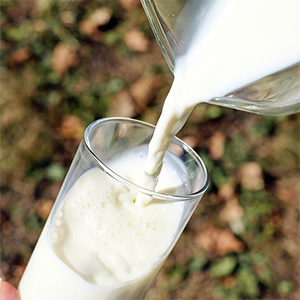Prevalence of Brucella spp. in milk from aborted and non-aborted animals in Dhamar governorate, Yemen

Accepted: 29 October 2022
HTML: 25
All claims expressed in this article are solely those of the authors and do not necessarily represent those of their affiliated organizations, or those of the publisher, the editors and the reviewers. Any product that may be evaluated in this article or claim that may be made by its manufacturer is not guaranteed or endorsed by the publisher.
Authors
Brucella infection in animals is considered a great problem in most countries of the world. Our study designed to determine the prevalence of brucella in field animal’s milk in Dhamar governorate, Yemen. Total of 808 raw milk samples from non-aborted field animals, 120 milk samples from aborted animals, and 30 pasteurized milk samples were teste by Milk-Ring Test (MRT), milk-ELISA test, isolation and identification of brucella species, and antibiotic susceptibility. The prevalence of brucella in milk samples from field animals was 0.8%, 2.6%, and 2% in cows, sheep, and goat milk samples respectively with MRT, and 0.8%, 1.3% and 1.6% in cows, sheep and goat milk samples respectively with the milk- ELISA test. The prevalence rate in milk samples from aborted animals was 33%, 64% and 41.2% with the MRT and 39%, 49%, and 41.2% in cows, sheep and goats respectively with the milk-ELISA test. All pasteurized milk samples were negative for the milk-ELISA test. The result of isolation showed 0.1% of Brucella in milk samples from field animals while 9.2% from aborted animals. All isolates of Brucella species were sensitivities to rifampicin, doxycycline, kanamycin, gentamicin, streptomycin, tetracycline, and ciprofloxacin, while resistant to ampicillin, erythromycin, and novobiocin. In conclusion, the high prevalence of milk brucella especially in aborted animals needs focusing and build controlling strategies plans to decrease the losses to the economy and avoid transferred to humans with unpasteurized milk consumption.
Supporting Agencies
NoneHow to Cite

This work is licensed under a Creative Commons Attribution-NonCommercial 4.0 International License.
PAGEPress has chosen to apply the Creative Commons Attribution NonCommercial 4.0 International License (CC BY-NC 4.0) to all manuscripts to be published.

 https://doi.org/10.4081/ijfs.2022.10370
https://doi.org/10.4081/ijfs.2022.10370



